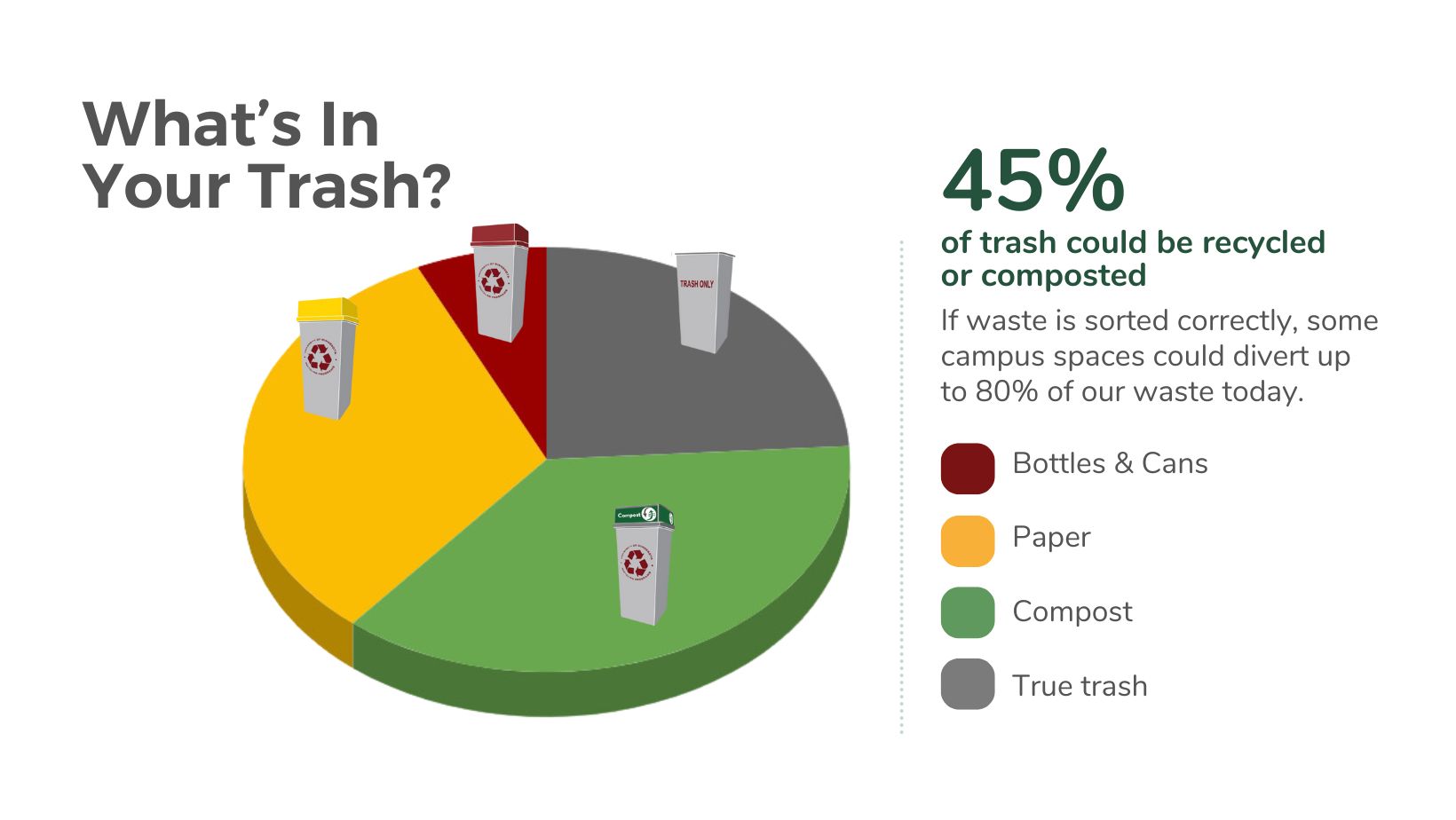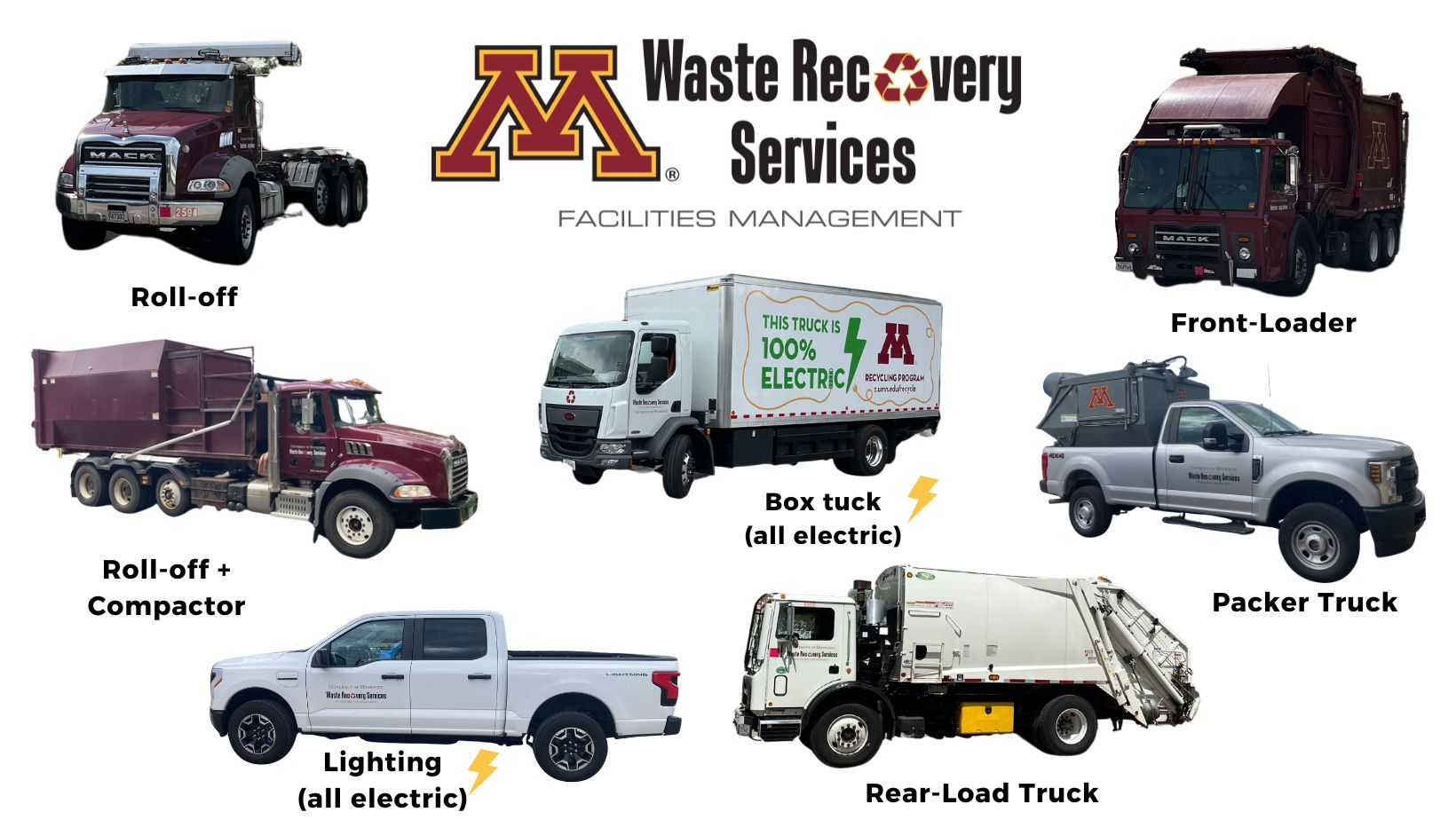Why do we dispose of things?
Despite the University of Minnesota's advancements in waste management, we still grapple with items and materials that can't be reused, recycled, or composted. These challenges often stem from limited recycling markets or poor product design.
Types of Unrecoverable Waste
- Medical Waste: Items such as syringes, medical gloves, and other medical supplies cannot be recycled or composted due to their potential for contamination.
- Non-Compostable Serviceware: Single use items like plastic utensils, plates, and cups that are not compostable. How to know if something is non-compostable.
- Wrappers and Chip Bags: Have plastic or metal linings that are difficult to separate and recycle.
- Dirty Plastic Bags: Bags contaminated with food or other substances are not easily recyclable.
- Some plastics: Materials like styrofoam and unknown plastics are problematic in the recycling market due to their poor quality or unknown chemical makeup.

Many items on campus end up in the trash when consumers choose not to reuse or recycle them. Once discarded, recovering these items becomes challenging and sometimes hazardous. Recent waste audits reveal that over 45% of materials disposed of as trash could have been reused, recycled, or composted. Collective participation is essential to drive sustainable change.

Who is moving the campus trash?
Waste Recovery Services, a department within Facilities Management at the University of Minnesota Twin Cities, operates as a self-hauler with its own drivers and fleet. They collect waste from the 259 campus buildings using university-owned vehicles like rear-loading packer trucks or compactors, ensuring safe and secure transport to its final destination.

What’s the final destination for campus trash?
Campus waste, officially known as municipal solid waste (MSW) is delivered to the Hennepin Energy Recovery Center (HERC) where it undergoes incineration for energy generation. HERC is a waste-to-energy (WTE) facility.
Read more about the Hennepin County Energy Recovery Center within the HERC Information Report
Why Hennepin Energy Recovery Center?
Under guidance from the Minnesota Waste Management Act, Minnesota Pollution Control Agency, and Metropolitan Solid Waste Management Policy we are directed to deliver our waste to the HERC. This approach aligns with the Minnesota Waste Management Hierarchy; as seen in the graph below.

What are we doing about waste?
Explore our website to learn about our efforts in ReUse, Recycling, and Composting. Our long-term goal is to collaborate with all university departments to move UMTC towards zero waste.